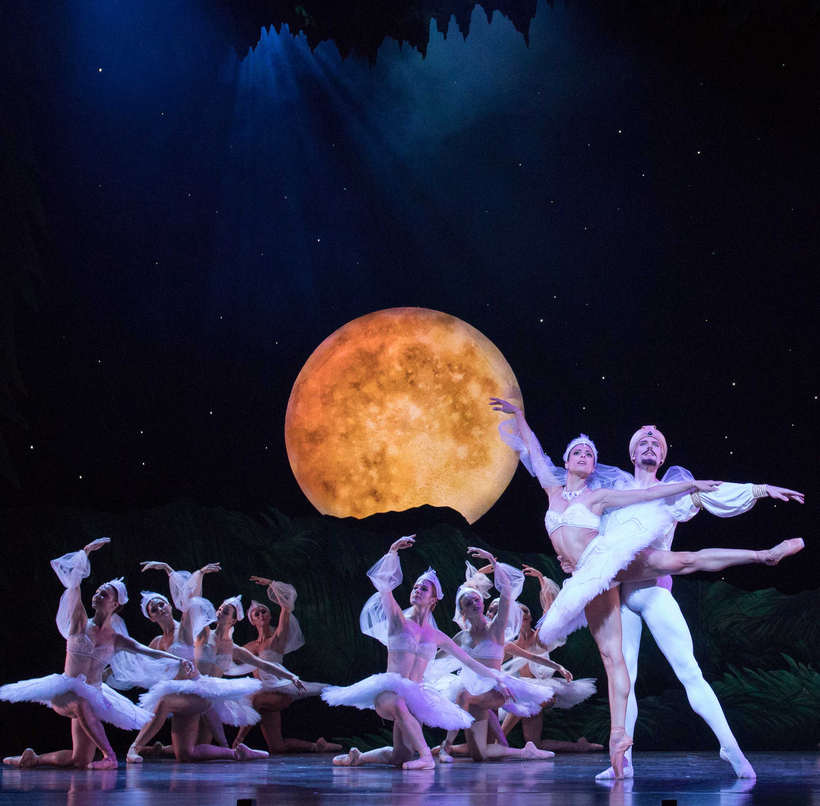Marius Petipa’s ballet of 1877, La Bayadère, was unknown in the West before the 1960s. But once it got out of the Soviet Union, this exotic extravaganza set in ancient India—where the good girl gets eternity and the bad girl gets fouettés—joined the canon, anchored by the iridescent “Kingdom of the Shades,” a passage of pristine geometry in which the hero, stoked by opium, sees the image of his dead beloved multiplying ad infinitum. Mythical India, with its poisonous snakes and treacherous rajas, is a cliché, and at least two productions have independently updated the action to the British Raj. The first company to swap centuries was the Royal Danish Ballet, in 2012. In 2018, the Royal Winnipeg Ballet, the West Australian Ballet, and the Queensland Ballet—with choreographer Greg Horsman—collaborated on their own update.
Horsman sets the story in 1855, and in his version, Gamzatti, the scheming daughter of a raja, is replaced by Edith, the spoiled daughter of a British official. Both she and Nikiya, a poor but proud temple dancer, are in love with the handsome, somewhat dithering Solor, who in this production is the son of a maharaja. He loves Nikiya but must make a political marriage with Edith, who soon strangles Nikiya in a jealous snit, dooming her to dance one of ballet’s transcendent vision scenes. The score, as well, has received more relevant tonal coloration. Nigel Gaynor, music director of the Queensland Ballet, re-orchestrated the tuneful Minkus melodies to include sitars and Indian drums. “A lovely way,” he says, “of combining Eastern and Western cultures.”
Despite these changes, André Lewis, the artistic director of the Royal Winnipeg Ballet, whose company is dancing five La Bayadères, from October 2 to 6, stresses that it is still a traditional version. “It’s a classical ballet,” Lewis says. “That is what we do.” —Mary Cargill

